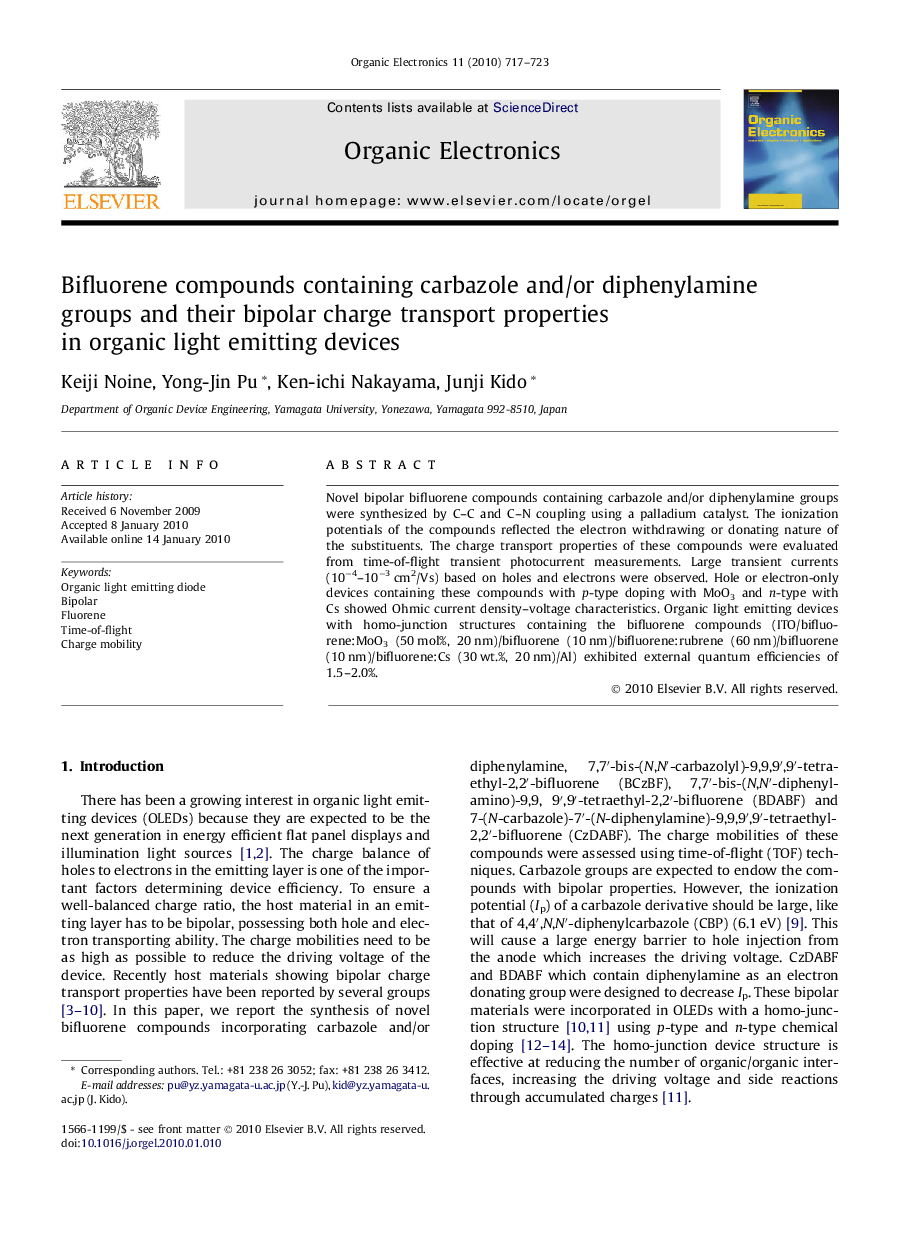| Article ID | Journal | Published Year | Pages | File Type |
|---|---|---|---|---|
| 1267914 | Organic Electronics | 2010 | 7 Pages |
Novel bipolar bifluorene compounds containing carbazole and/or diphenylamine groups were synthesized by C–C and C–N coupling using a palladium catalyst. The ionization potentials of the compounds reflected the electron withdrawing or donating nature of the substituents. The charge transport properties of these compounds were evaluated from time-of-flight transient photocurrent measurements. Large transient currents (10−4–10−3 cm2/Vs) based on holes and electrons were observed. Hole or electron-only devices containing these compounds with p-type doping with MoO3 and n-type with Cs showed Ohmic current density–voltage characteristics. Organic light emitting devices with homo-junction structures containing the bifluorene compounds (ITO/bifluorene:MoO3 (50 mol%, 20 nm)/bifluorene (10 nm)/bifluorene:rubrene (60 nm)/bifluorene (10 nm)/bifluorene:Cs (30 wt.%, 20 nm)/Al) exhibited external quantum efficiencies of 1.5–2.0%.
